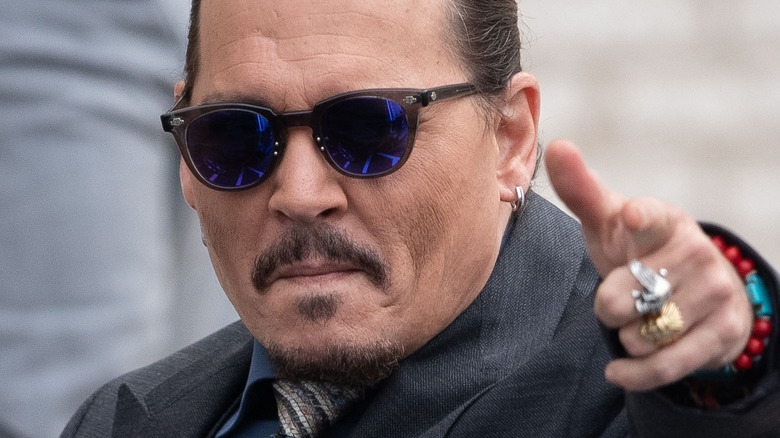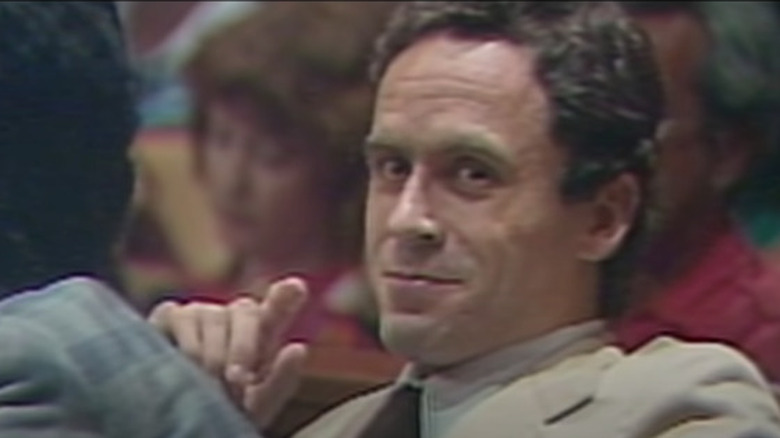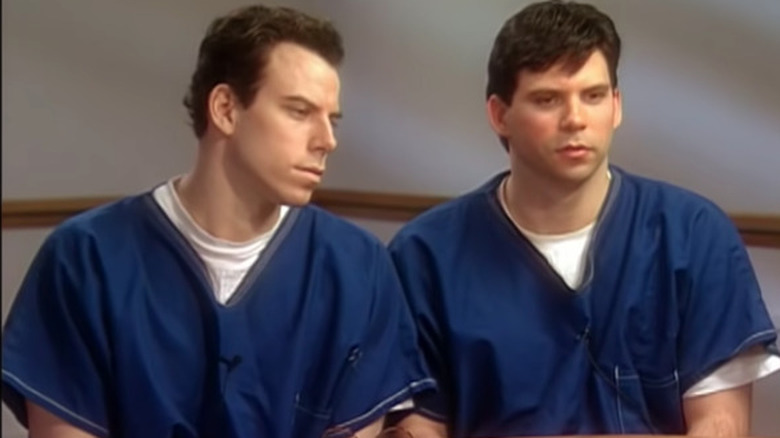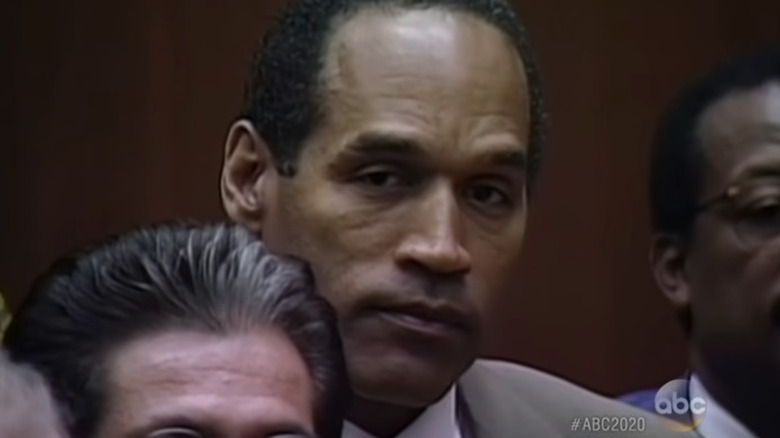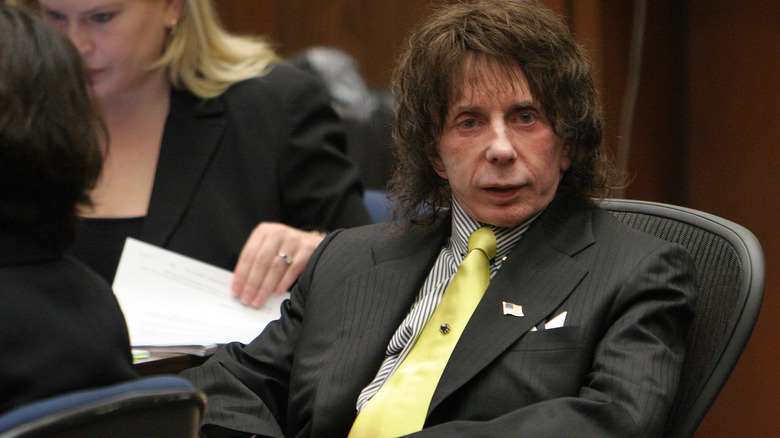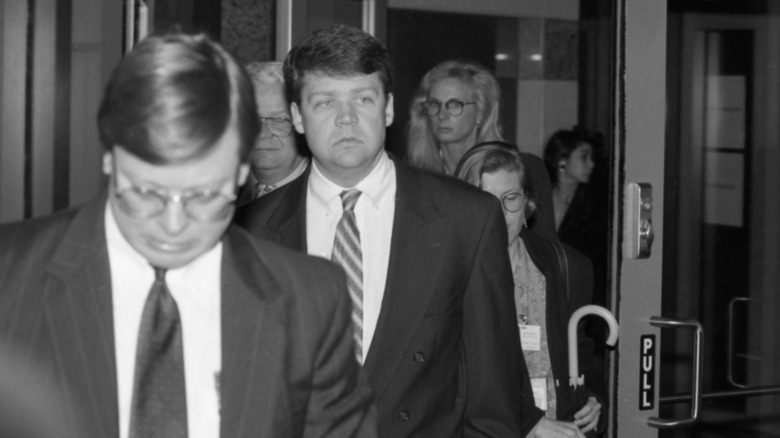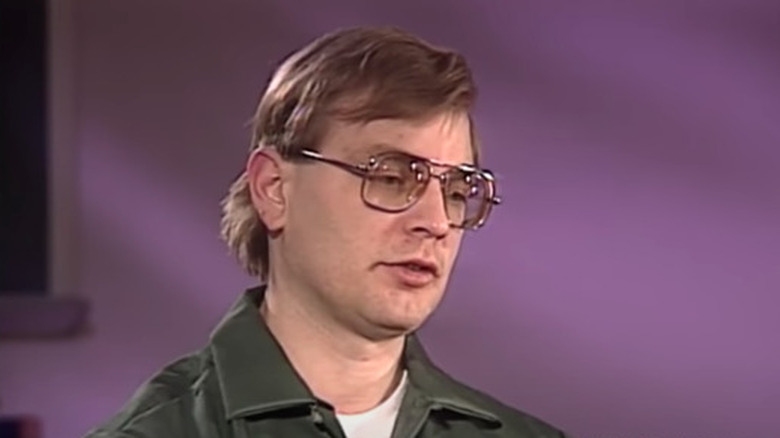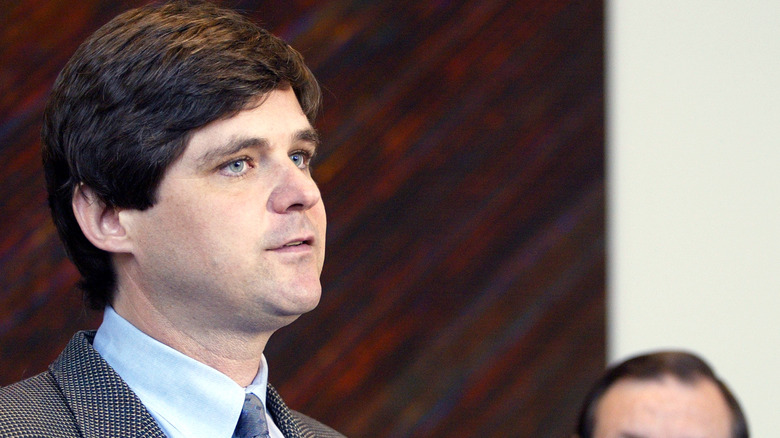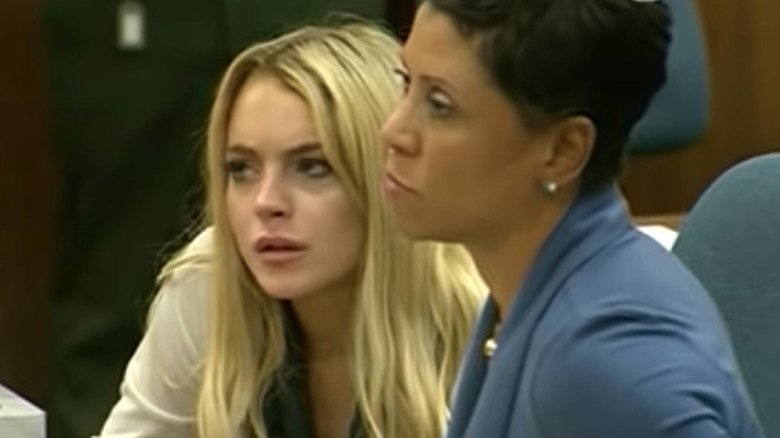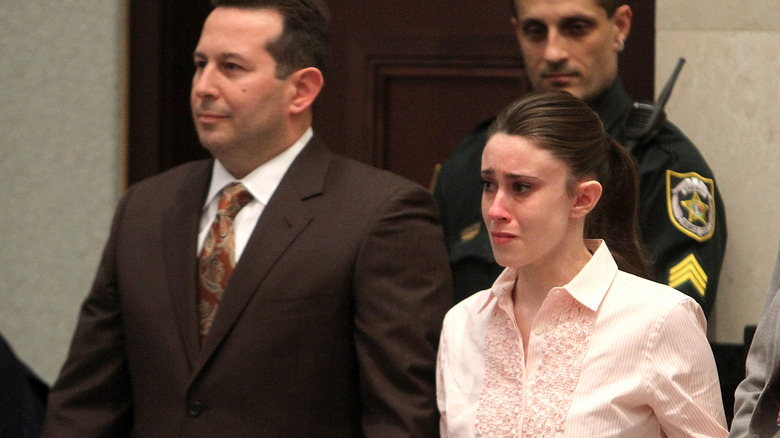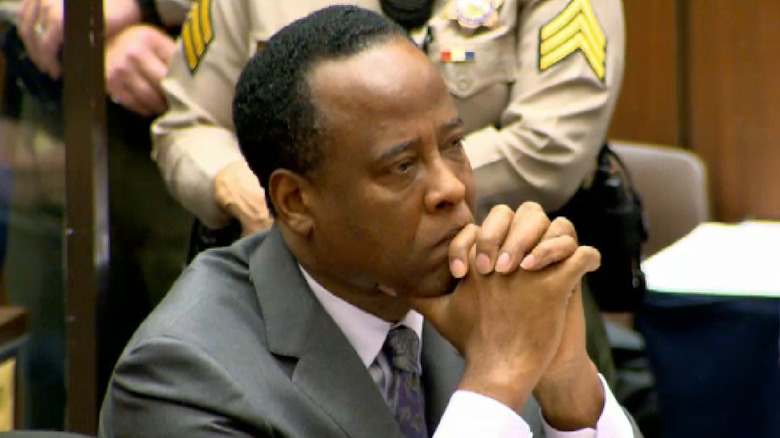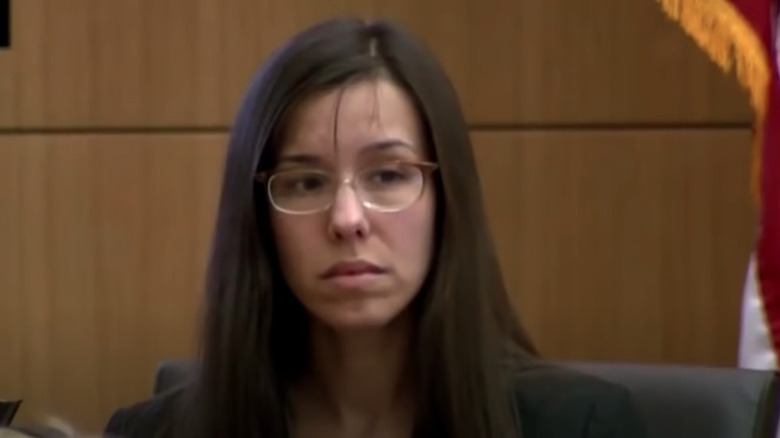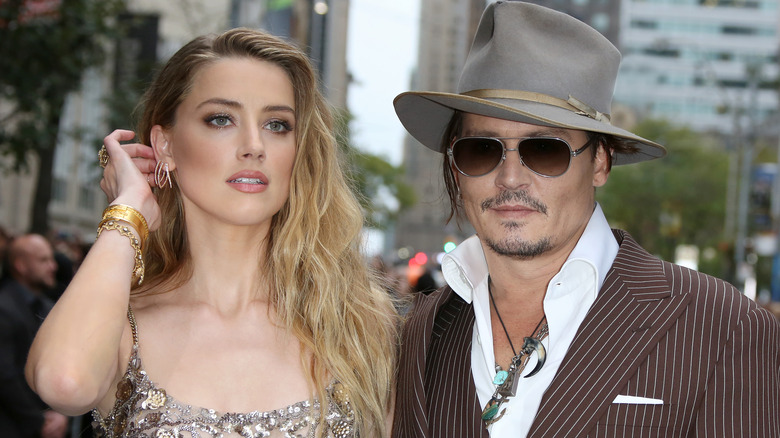The Most Watched Court Cases In TV History
Courtroom television might be the most morally-gray type of entertainment out there. In fact, It hadn't always been legal. After the media debacle that occurred during the trial for Charles Lindbergh's baby kidnapping, in which cameramen climbed onto witness tables for shots and blinded witnesses with camera lights, the American Bar Association banned cameras and recording devices in courtrooms. In 1997, Congress handed the decision to allow cameras to judges, and today, all 50 states have legalized cameras in courtrooms to some degree, per The First Amendment Encyclopedia.
When Court TV came on the scene in 1991, bringing the first wave of 24-hr courtroom coverage, not everyone was on board. Some thought it would bring unneeded pressure on court professionals, knowing that everything they were doing was being watched by millions, per Entertainment Weekly. But Court TV cemented its legacy in American culture. It was the prototype for modern reality TV, and it gauged the public's hunger for true crime entertainment before anyone else did. Now, trials are streamed online, accessible anywhere from your phone, just in time for the 2022 Johnny Depp-Amber Heard defamation trial.
But which of the most notorious trials drew the biggest audiences? Here are the most-watched court cases in history.
Bundy v. State of Florida
In 1979, millions of Americans watched Ted Bundy defend himself in court and thought to themselves, "There's no way this man killed all those women." His charm lured women to their deaths, and that same charm lured Americans to closely watch his murder trial. Even the presiding judge Edward Cowart was taken by Bundy's presence and wished him well after sentencing him to death, remarking that Bundy could have made a good lawyer, per Yahoo! News.
Bundy's trial was one of the first to be nationally televised, since the Florida Supreme Court made it legal for cameras and recording equipment to be present in Florida courtrooms only a month prior, per Miami New Times. More than 250 reporters from five different continents covered the case, per Mental Floss. Cowart remarked that all the production lights, wires, and cameras made his courtroom look like a "space center."
The publicity earned Bundy a legion of female fans, some of whom attended his trial dressed up in the way he preferred his victims, per A&E. The trial was originally billed as the Chi Omega murder case since Bundy was charged for the murder of two sorority students. He ultimately confessed to 36 murders — experts believe the true number is around 100 — and was sentenced to death twice. He later received a third murder conviction in a separate trial. Although he tried to appeal the rulings several times, he eventually died by electric chair in 1989, per Britannica.
California v. Menendez
It was only two years before the Menendez brothers' first trial that Court TV was established. Its monumental launch brought live coverage of courtroom proceedings and supplementary analysis to living rooms across the United States. Lyle and Erik Menendez — two brothers who confessed to murdering their parents — weren't celebrities, but their trial still attracted millions of viewers to the channel. The popularity of their trial coverage proved a public interest in criminal proceedings, and the more scandalous the crime, the better. It was the first kind of reality TV, and for cable news channels like Court TV, it was lucrative, per Rolling Stone. The public was so invested in the drama of the Menendez trial that the LA district attorney's office received 50 calls per day from people who had thoughts on how to prosecute the brothers.
Court TV added 3 million new subscribers during the trial, per the LA Times. Maybe it was because the story resembled a soap opera: two sons shot their wealthy parents while they watched TV, lavishly spent their money immediately after, and then claimed they were victims of sexual abuse.
After the jurors couldn't agree on manslaughter or first-degree murder sentences, the judge declared a mistrial. At the Menendez's second trial, they received two consecutive life sentences. The first trial's legacy was far-reaching; other television networks were compelled to also air legal proceedings, and some believe its popularity fueled public interest in the ensuing case involving O.J. Simpson, per Rolling Stone.
People of California v. Simpson
When the jury declared O.J. Simpson not guilty of murder, 57% of America was watching — that meant 150 million viewers, per Time. That number still continues to trump major modern-day sporting events. Phone companies recorded a 60% drop in usage as people turned on their televisions, and water usage declined as people avoided using the bathroom in order to catch the verdict, per Vanity Fair.
But it wasn't just the verdict — the regular trial coverage brought so much viewership to CNN and Court TV that other networks worried about the economic fallout. Non-Simpson trial nightly broadcasts lost as much as 10% of viewers, per The New York Times.
Its popularity isn't difficult to understand: Simpson was a retired football star whose name and face were ubiquitous in a previous era, starring in Hertz commercials and the movie "Naked Gun," per ESPN. But even when his reputation soured, the drama surrounding him occupied media attention for a consistent 16 months. From the white Bronco car chase of June 1994 to the reading of his not guilty verdict in October 1995, there was plenty of sustained attention generating international interest, per Time. Since he was the center of the "Trial of the Century," Simpson's name remains a pull decades later. In 2014, nearly 14 million people watched his parole hearing after an armed robbery sentence, per The Hollywood Reporter.
The Phil Spector trial
In terms of public fascination with bizarre true crime and celebrity intrigue, the Phil Spector murder trial had many things working in its favor. Spector, although a recluse in his later years, was once a giant in the music industry. He worked with the likes of The Ronettes, John Lennon, and The Ramones, and he broke new ground with his "Wall of Sound" recording technique.
His victim, Lana Clarkson, was an actress who starred in various B-movies, as well as the classics "Scarface" and "Fast Times at Ridgemont High." The two had met at the House of Blues in West Hollywood and made their way to Spector's home in Alhambra, California. History records that in the early morning of February 3, 2003, Clarkson died from a gunshot to the mouth. According to Spector's limo driver, he came out of his home with a gun and said, "I think I killed somebody."
Spector's trial in 2007 received a lot of publicity, in part due to his fashion and eclectic hairstyles in court. He also hired various celebrity lawyers like Robert Shapiro, who had defended O.J. Simpson, according to History. Spector maintained that Clarkson's death was an accidental suicide, and his defense team argued Clarkson was depressed over a failing career and other personal troubles. However, there were several witnesses who alleged Spector was guilty of violence toward other women. After a mistrial, a second trial in 2008 convicted Spector of second-degree murder. He died while in prison in January 2021.
The Rodney King police trial
On March 3, 1991, a video captured Rodney King being brutally attacked by officers of the LAPD after an 8-mile police pursuit. The footage was widely disseminated on news broadcasts, provoking nationwide anger about King's treatment. King, who was on parole for robbery, was released from custody without charges.
Meanwhile, the four officers were charged with assault and excessive use of force. The outrage in Los Angeles was so palpable that their trial was moved to Ventura County, per History. Along with Los Angeles, the nation watched the trial expecting commensurate justice to what was seen as a prime example of racist police brutality. Local television stations reported that the trial received more viewership than other local programs, per the LA Times.
But the jury found the officers not guilty, except for a sole charge of an assault that resulted in a hung jury. As a result, Los Angeles erupted in five days of rioting. The reaction was particularly charged in South Los Angeles, which was predominantly Black at the time and experienced a 50% unemployment rate, per NPR. Across the city, there was widespread arson and looting, which resulted in $1 billion in property damage. In only three days, 60 people were killed and more than 2,000 were injured, forcing President George H.W. Bush to send in federal officers.
In 1993, a federal trial found two of the officers guilty of assault, and King received $3.8 million in a civil suit, per History.
WI v. Dahmer
Along with Ted Bundy, Jeffrey Dahmer has earned a place in the pantheon of America's most infamous serial killers. So it's no surprise that his trial brought millions of eyes from all over the world: The details of his grisly crimes ensured that.
After discovering Dahmer's gruesome collection of human remains in his apartment, the police arrested him and he confessed to the murders of 17 people. Dahmer initially pled not guilty to 15 charges of murder but then changed it to guilty but insane. The trial, which began in January 1992, was a prime target for 24-hour news channels, and it especially captured the attention of towns that were impacted by Dahmer's crimes, per A&E. At his verdict reading, 60 international news organizations were present, per The Hollywood Reporter.
Dahmer had to convince the jury that he couldn't control himself, especially since he admitted he knew his actions were wrong. His defense claimed he suffered from necrophilia, which motivated his acts of cannibalism. He was also motivated to kill in order to satisfy a strange desire for zombie friends, per A&E. The jury didn't buy into the mental health excuses and determined Dahmer was sane, which led to 15 life sentences or 957 years, per The Hollywood Reporter. He was later tried for another murder and received another life sentence.
The William Kennedy Smith trial
William Kennedy Smith's 1991 rape trial brought international attention, mostly because of his "Kennedy" name. He was the nephew of the former president, and his family remained influential in the realm of politics. Smith was a medical student at Georgetown University when the allegations took place. He was visiting Palm Beach with his uncle, Senator Ted Kennedy, when he met Patricia Bowman at a bar. They went back to his home together and walked along the beach. It was then that he assaulted and raped her, according to Bowman. Smith claimed that their relations were consensual, and he was eventually acquitted, per History.
For many watching closely on cable news, it played out like a soap opera: at the center was a son of a powerful dynastic family who was accused of victimizing an unknown woman, whose anonymity was intriguing for many. Salacious details from that night were more risqué than anything else on television. Court TV, which had been experiencing a decline, suddenly got a ratings lift, per the Hartford Courant. Non-24-hour news shows like "Inside Edition" replayed the most newsworthy and dramatic bits. In one scandalous moment, a prosecution witness admitted to being paid $40,000 for two TV interviews. The judge reprimanded the courtroom for their loud reaction to the news, per the Washington Post.
If you or anyone you know has been a victim of sexual assault, help is available. Visit the Rape, Abuse & Incest National Network website or contact RAINN's National Helpline at 1-800-656-HOPE (4673).
Lindsay Lohan's probation trial
The tabloids have followed Lindsay Lohan throughout her life, even during her legal troubles. In 2007, Lohan was arrested twice for drunk driving. She received probation and was ordered to attend counseling sessions, which she failed to honor. On July 7, 2010, a judge sentenced her to 90 days in jail and a 90-day stay at a rehabilitation center, per CNN. The verdict was broadcast live on TMZ's website, which 2.3 million people watched, per Reuters. Photos of Lohan crying were widely circulated through tabloids, along with a profane message on her fingernails which was scandalously perceived, per CNN.
Lohan ended up serving less than two weeks in prison and 23 days in rehab. She received new probation rules that allowed her to stay under house arrest in her West Hollywood home. Only a month later, however, Lohan returned to court after a failed drug test and was sent to jail again but was shortly released on bail, per CNN.
Anthony v. State of Florida
In 2008, Casey Anthony's 2-year-old daughter, Caylee, went missing. Her remains were later found less than a half-mile away from Anthony's home, per Biography. Anthony repeatedly misled investigators about Caylee's last-known whereabouts, and pictures of Anthony partying after Caylee's disappearance led much of the public to believe her guilty. She was charged with murder, aggravated child abuse, and manslaughter. In the end, she was only found guilty of misinforming police.
It's hard to summarize the Casey Anthony trial and its surrounding media circus without the mention of HLN and Nancy Grace. During the trial, HLN's non-stop coverage earned it the highest ratings of cable news, even toppling Fox News at one point. Grace led a primetime show that saw 1.5 million viewers in June 2011. It was an 80% increase in regular viewership, per The Hollywood Reporter. Grace, a firebrand critic of Anthony, garnered a legion of predominantly female fans. When the verdict was read, which found Anthony not liable for her daughter's death, Grace proclaimed, "Caylee's death has gone unavenged!" Five million people—the biggest ratings in HLN history—watched as Grace unabashedly denounced the outcome and its defendant, per The Washington Post.
Dr. Conrad Murray's trial
The trial of the man who may have been responsible for the King of Pop's death was bound to elicit interest. On August 24, 2009, the Los Angeles County coroner found that Michael Jackson died from high levels of propofol, an anesthetic that he may have been addicted to. Six weeks before his death, Jackson hired Dr. Conrad Murray as a personal doctor and paid him $150,000 a month. Jackson suffered from insomnia and used an intravenous drip of propofol before bed to help him sleep. He used it so often that a previous nurse of his refused to buy him more of the drug. Although Murray himself was concerned Jackson had developed an addiction, he continued to administer the drip.
On the night of his death, June 25, 2009, Jackson took the IV, along with lorazepam, an anti-anxiety medicine, and midazolam, a muscle relaxant, per Biography. Minutes later, Murray found that Jackson's pulse had slowed and breathing had stopped. His subsequent actions have been scrutinized and are thought to have contributed to Jackson's death: Murray gave Jackson another drug, flumazenil, which may have made things worse, and he waited 82 minutes to call for help.
A jury found Murray guilty of involuntary manslaughter and he was sentenced to four years in prison, but only serving two. When the verdict was read, 2.1 million viewers watched HLN for coverage, per The Hollywood Reporter.
The Jodi Arias murder trial
When the Jodi Arias trial verdict was read, several cable news channels had over 2 million viewers each. Fox News led the pack with 2.76 million viewers. HLN had the largest viewership increase among them, per The Hollywood Reporter.
Like many popular cases before it, the trial had no end of salacious details and was highly sexual in nature. Arias maintained that she killed her ex-boyfriend, Travis Alexander, out of self-defense. Her lawyers argued that Alexander had used her for sex and had attacked her in the shower, where Alexander's body was ultimately found. The prosecution argued that Arias was an obsessive and vengeful ex-girlfriend who was jealous of Alexander for moving on.
Regardless, evidence proved that Arias brutally killed Alexander in the shower, and she had taken photos of him bleeding prior to his death, per A&E. In May 2013, Arias was found guilty of first-degree murder. After two hung juries, she was sentenced to life without parole. That decision ended 19 weeks of media coverage, which Arias' lawyer likened to a circus. She filed an appeal, arguing the court didn't protect her from media hounding, which deprived her of a fair trial, per the AP. However, her conviction has been upheld.
Depp v. Heard
In 2022, the biggest court spectacle came courtesy of Hollywood stars Johnny Depp and Amber Heard. The previously-married couple split up in 2016. Heard immediately alleged that Depp was abusive and was granted a temporary restraining order. Things came to a head when Heard published an op-ed in The Washington Post in which she described herself as a victim of domestic abuse, although she didn't name Depp. In 2019, Depp sued her for defamation for $50 million in damages, citing the op-ed, and Heard later filed a countersuit for $100 million in damages when Depp's lawyer called her claims a "hoax."
The jury ruled in Depp's favor, awarding him $15 million. They also awarded Heard $2 million in compensatory damages for one count of defamation in her countersuit, per NBC News.
The defamation trial was streamed on online channels like Law & Crime and Court TV. On YouTube, 3.5 million people streamed Law & Crime's verdict coverage. Since the start of the trial, the channel saw almost a billion views and 2.3 million new subscribers. Meanwhile, Court TV's audience increased 278%, per Next TV. The trial dominated online discourse, not only during the lawsuit but for the entirety of the years-long Depp-Heard legal saga.
